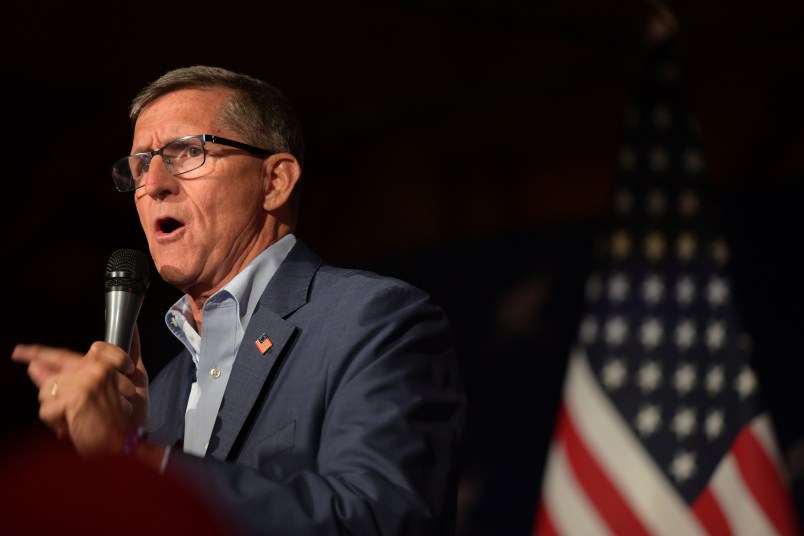President Obama’s new plan to fix the Gulf oil spill is so crazy it just might work…
As BP’s high-priced industry experts flail, the president last week turned to a rag-tag band of big-think scientific renegades, and sent them on a mission to somehow MacGyver a way to stop up the leak — before it’s too late.
OK, maybe that’s going a bit far. In fact, the news that Obama and his energy secretary, Steven Chu, sent a team of leading physicists and engineers to the Gulf to work with BP offers further evidence of the administration’s essentially technocratic approach to governance, and its faith in knowledge-based expertise. That might seem like common sense, but it represents a shift from the Bushies’ belief in the problem-solving power of industry, and its willingness to let science take a backseat to the concerns of its religious base.
Still, asking one of the key inventors of the hydrogen bomb, along with an engineer who helped develop techniques for mining on Mars, counts as out-of-the-box thinking. Here’s a quick rundown on the president’s unlikely team:
The Old Hand: Richard Garwin

In 1951, 23-year old Richard Garwin was working at the Los Alomos nuclear laboratory,
when he was asked by Edward Teller to devise an experiment that would demonstrate the principle of “radiation implosion.” Garwin’s detailed sketch served as the basis for “Mike,” an 80-ton device, that was detonated the following year as the world’s first hydrogen bomb. “I wasn’t the inventor,” Garwin has said. “I was sort of the architect.” In 1952, Garwin went to work for IBM — where he remains a fellow emeritus — on the understanding that he could spend a third of his time working with the federal government on national security issues. He’s a recipient of the national medal of science, and a member of the JASON, an elite think tank that studies complex scientific problems on behalf of the U.S. government. In 1991, Garwin convened a symposium of experts to discus ways to stem oil flows from Kuwait wells, set on fire by Iraq during the Gulf War. For Garwin, now 82, could this be his last hurrah?
The Establishment Man: Tom Hunter

Tom Hunter yesterday announced his resignation as the president of Sandia National Laboratories, an outpost of the U.S. nuclear weapons complex that conducts high-level research for the National Nuclear Security Administration. He had been at Sandia since 1967, and served as president since 2005 — a job that reportedly paid him $1.7 million a year. He has a Ph.D. in Nuclear Engineering from the University of Wisconsin. Hunter said yesterday he had no particular plans for what he’d be doing in retirement. That may have changed.
The Maverick Genius: Alexander Slocum

Alexander Slocum, a professor of mechanical engineering at Massachusetts Institute of Technology, teaches a world famous design and manufacturing class that culminates in a remote-controlled robot competition. He holds more than 60 patents for inventions relating to biotechnology, robotics and computer science, but his research interests also include “going faster on my snowboard, staying down longer SCUBA diving!,” according to his website. A colleague told Bloomberg: “He has a lot of creative ideas. One in 10 are really brilliant ideas, but nine are dumb. You can’t miss that one that is brilliant.” No word on whether inspiration struck in the Gulf.
The No-Nonsense Engineer: George Cooper

George Cooper might have the most relevant experience for the mission at hand. A professor of engineering at UC Berkely, he spent much of his career in industrial research with Britain’s National Physical Laboratory and now serves as Senior Petroleum Engineer at DOE’s Lawrence Berkeley Laboratory. But he can branch out too: According to Bloomberg, he once worked with the National Aeronautics and Space Administration to adapt mining techniques for use on Mars.
The What-Am-I-Doing-Here? Guy: Jonathan Katz

Jonathan Katz, a physics professor at Washington University in St. Louis, is another member of JASON. But Katz’s major research focus has been astrophysics, and in an interview Friday with a St. Louis paper, he didn’t seem confident that he had been much help with the mission. “I was honored to be invited and enjoyed the experience,” said Katz. “Did I have anything much to contribute? I think I have some ideas for how to prevent this kind of thing from happening in the future, but I don’t have anything very specific to offer on the present problems. It is very much in the hands of the real pros.” Asked if he’d be willing to go back, Katz said: “I’d be happy to, but someone’s got to send me an email or a phone call.”









